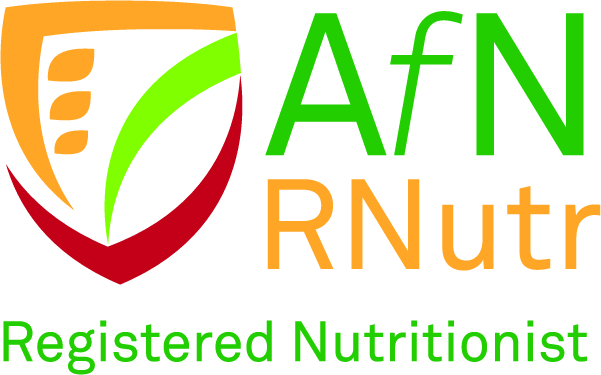Food Labelling
What do I need to know about food labelling?
Knowing how to interpret information on food packaging enables us to make informed decisions about the food we purchase.
Empowered with knowledge, we can skim the information quickly to get the important facts, making comparisons much quicker.
Not many of us have the time to scrutinise all the data or marketing claims when we do our shop, but with the summary below coupled with some top tips, this will be made much easier for you!
This is not about checking every single product you buy or consume, but gaining an overall knowledge of what the information means and how to decipher the important parts. This is particularly useful for foods or drinks you purchase on a regular ongoing basis.
On the back
The back of pack generally shows the nutritional information, plus the ingredients, allergen, storage/cooking instructions and the use by date.
The ingredients are an important part of the label as they show what is contained within the product. Ingredients are always listed in quantity order, so if an ingredient such as sugar or butter is towards the start of the listing, you’ll know that the product contains a greater proportion of sugar or fat within the recipe.
In the UK, there are 14 common allergens and if any of these are contained within the product, these must be emphasised so they are easy for us to see (usually they are shown in bold lettering). You may notice that some products have a warning ‘May contain’. This means that the allergen has not been added to the product by the manufacturer, but there is a small risk of cross contamination in the process (e.g. in a cake factory they may make cakes with nuts and cakes without nuts. Even though the manufacturer may take really thorough steps to avoid any kind of contamination, because they have nuts on site, there will always be an element of risk, even though that risk might be really small).
For pre-packed foods the provision of nutrition information per 100g of the product is mandatory. Knowing the ‘per 100g’ values makes it easier to compare the nutrients of different products. The manufacturer may also provide the ‘per portion’ or ‘per pack’ information.
Here are the nutritional values for a Dolmio pasta sauce as an example:

| Typical Values | Per 100g | Per Portion (125g) |
| Energy | 198kJ/47kcal | 248kJ/59kcal |
| Fat | 0.6g | 0.8g |
| Of which saturates | 0.1g | 0.1g |
| Carbohydrate | 8.2g | 10g |
| Of which sugars | 5.7g | 7.1g |
| Fibre | 1.4g | 1.8g |
| Protein | 1.4g | 1.8g |
| Salt | 0.69g | 0.86g |
You can see that there are two units of measurement for calories. It is currently compulsory to include both across Europe, however, in the UK we tend to refer to energy as calories so you can ignore the kJ (kilojoule) information. They are the same thing, just different ways of expressing it.
The fat part shows the total fat, as well as the saturated fat, and the carbohydrate part shows the total carbohydrate, as well as the sugar (sugar is a type of carbohydrate). This includes sugar added to the recipe as well as sugar which is naturally occurring. For example, in a flavoured yoghurt, the sugar will generally come from the natural milk sugar (lactose) and then sugar which has been added to the recipe by the manufacturer in the form of table sugar, honey, syrups, nectars or fruit juice concentrates.
Salt is another nutrient which is expressed in two different ways. You will often see salt and sodium. Salt is the key one to look out for. Adults should not be consuming more than 6g of salt per day, and children much less.
Portion size is often shown on the labelling. In the example, it is very clear that the portion values are based on 125g of the product. It is not always as clear as this and it is generally up to the manufacturer to decide what portion size they recommend e.g. one slice of bread or two slices, or 30g of cereal with milk or 40g cereal with no milk. It is important to be mindful that the recommended portion size may be different to what you or your child actually have as this has a bearing on what nutrients you are led to believe you are consuming.
On the front
Sometimes products may use a colour coded scheme on the front of their packaging. This is called traffic light labelling and shows the levels of fat, saturated fat, sugar and salt alongside a colour, which represents whether that nutrient is high (red), medium (amber), or low (green).

Alongside calories (which are not coloured), these are the nutrients as a general population we tend to consume too much of.
Although the colours are based on 100g of the product, the actual nutrient numbers you can see are based on the product ‘per portion’. As per the back of pack information, the portion size might not align with what you or your child actually consume.
Traffic lights is a voluntary scheme, and although it can be useful to compare products at a glance, it is not without its limitations. UK Government are currently assessing whether to make this scheme mandatory, or to propose a new scheme.
One of the limitations is that it only focuses on a few nutrients, and doesn’t take the whole product into account; for example protein or fibre. There are also some products which are really beneficial for us but would score a lot of reds, making us think the product is not good for us. For example, dairy products might be high in saturated fat, but they are really useful providers of protein and calcium.
Nuts are really beneficial for our health (we are recommended to consume a small handful every day), however, these would score red for fat, even though these are good fats. It also doesn’t take into account that they contain important vitamins and minerals.
Cheese is another example. We all know that cheese is a great source of protein and calcium, important to build strong bones and teeth, however, this would score red for fat and salt. It’s correct that cheese is a high contributor of fat and salt, however, most children wouldn’t tend to eat 100g portions of it (which is what the colours are based upon).
Nutrition Claims
These are claims about the level of a nutrient that implies it is beneficial e.g.
- Source of fibre
- Low salt
- Source of vitamin C
- High in fibre
- Low fat
These claims are regulated by legislation and there are specific criteria the product has to meet before they are able to use the claims. For example, ‘low fat’ must contain no more than 3g fat per 100g of the product.
The key thing to note here, is that just because a product can use a claim for one nutrient, it has no bearing on the other nutrients. For example, a cereal claiming ‘high fibre’ could also contain high levels of sugar.
Health Claims
These are claims which link a food or an ingredient to health e.g. calcium is needed for the maintenance of normal bones. These are also regulated by legislation so you can be assured they are truthful.
Top Tips
- If products have traffic light labelling, use it to compare products at a glance, but be mindful that there are limitations to it’s use and it’s not applicable for all products.
2. Although milk, fruit and veg contain naturally occurring sugar, don’t focus on consuming less of these. They provide really valuable nutrients important for health (such as fibre, vitamins such as vitamin C, and minerals such as calcium).
3. Ignore reference intakes when it comes to pre-packed kids products. They are based on an average woman and so are irrelevant.
4. Be inquisitive about portion sizes. These are not always in line with what you or your child consumes.
5. Watch out for salt. This is a nutrient which is contained in many food products and as a result many of us consume too much. This can have a detrimental impact to our health.
6. When looking at nutrition labelling, it’s important to not focus too much on one product, but what you, or your child, consume over an average week or month. All foods can fit into a healthy balanced diet and the focus should not be about avoiding products because of their nutrient content. What you do the majority of the time is more important.
7. Be mindful of how you talk to children about nutrition. Rather than talk to them about nutrition labelling and good/bad foods; focus more on the enjoyment, texture, variety, and the health benefits food can provide (e.g. keep us healthy, make us grow, help us learn)


For lots of product comparisons on nutritional values and using the traffic light system head over to my Instagram page @the_nutrition_consultant









